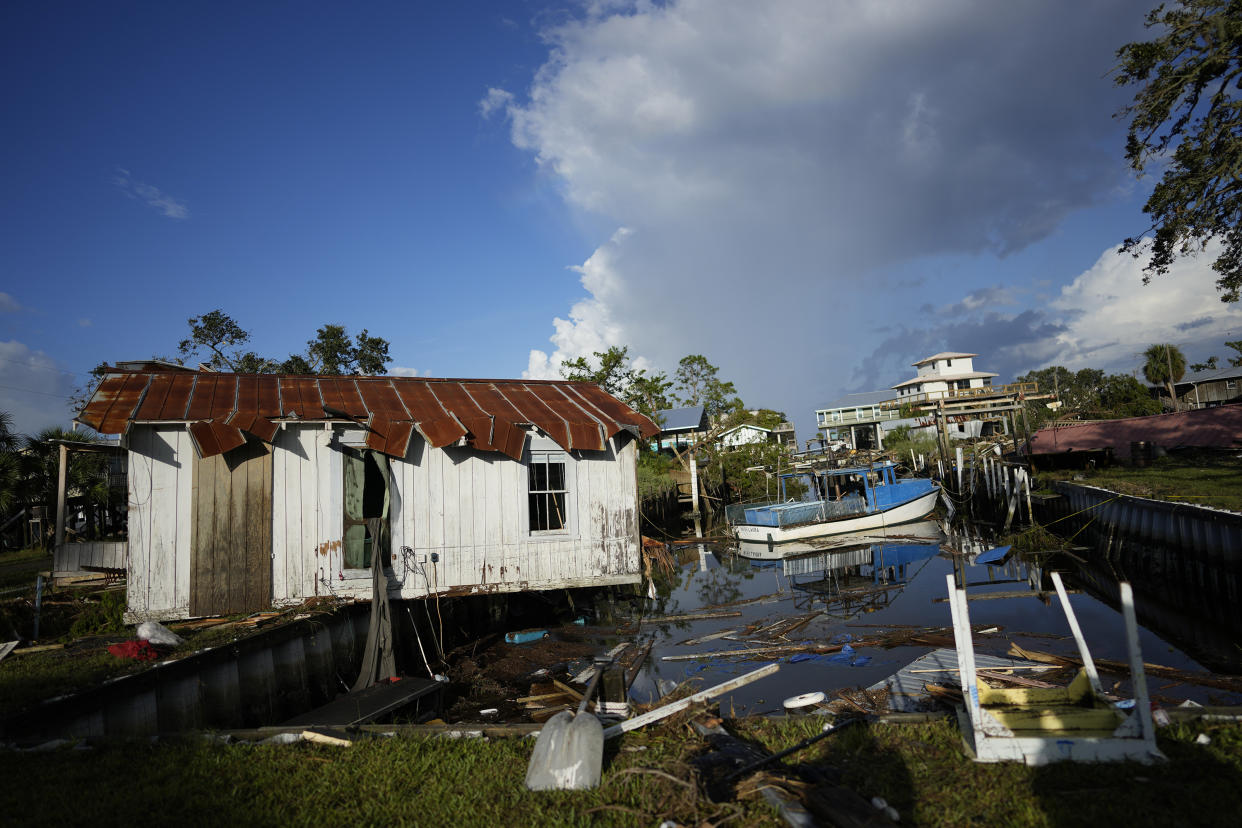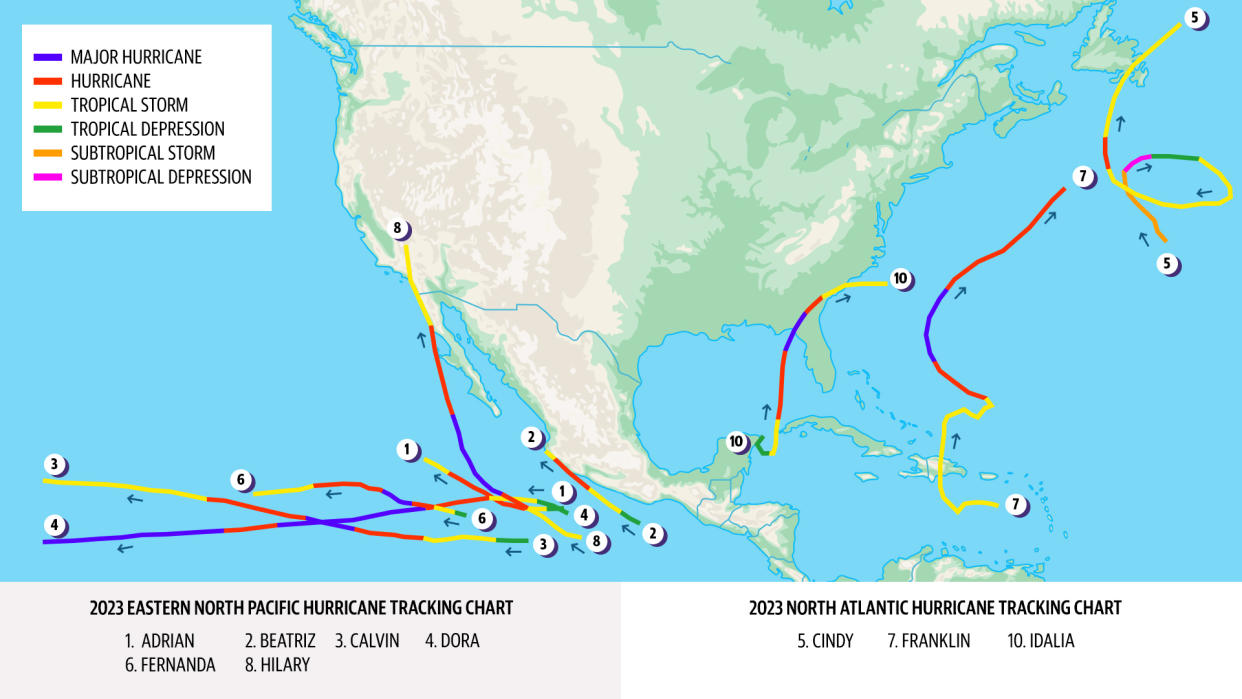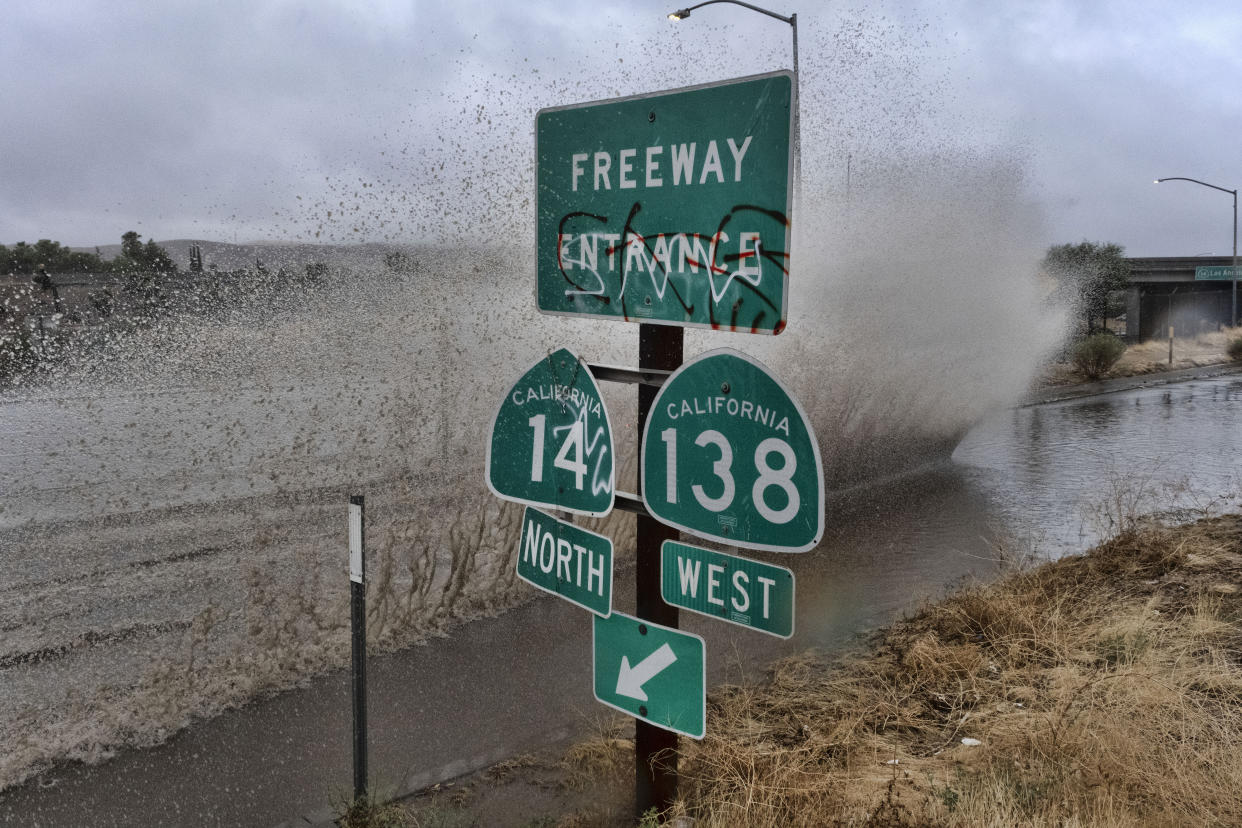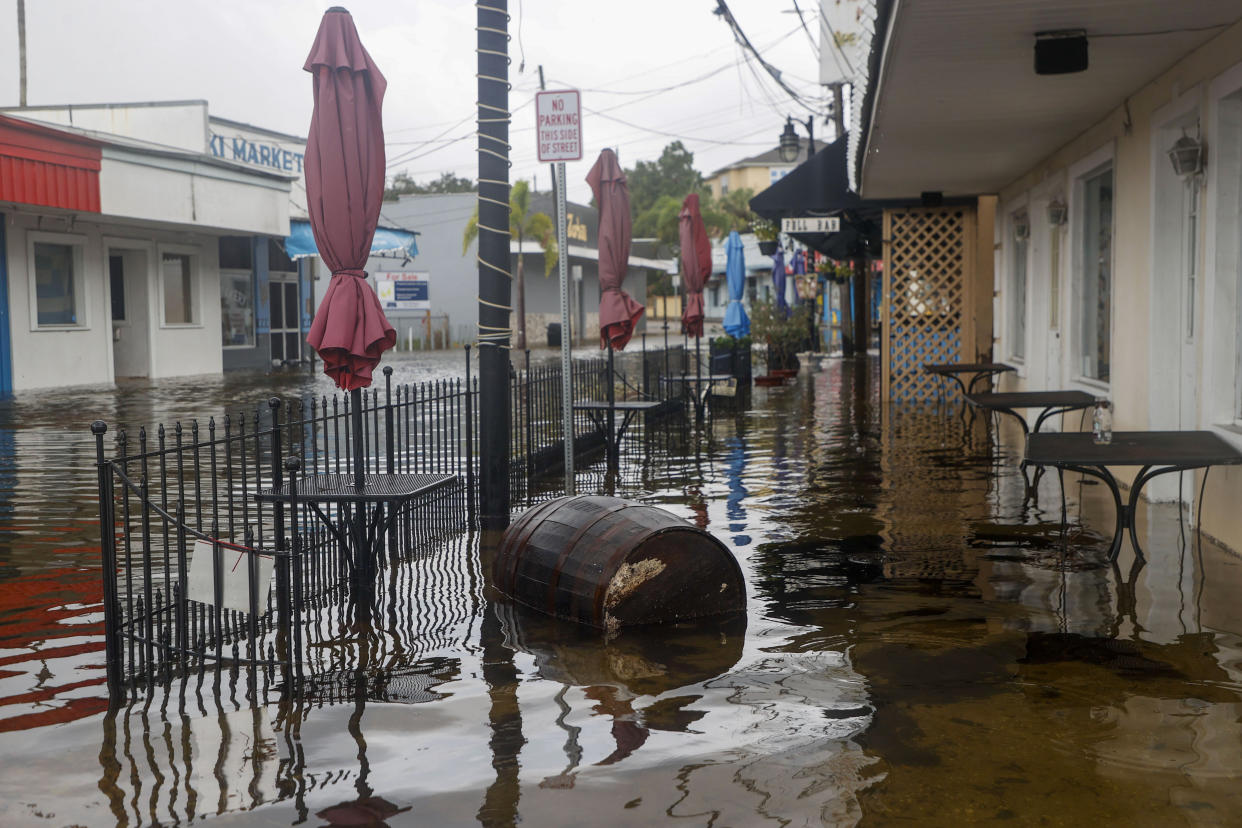Hurricane season 2023: What you need to know as Lee threatens the East Coast

The U.S. has been hit with a series of severe storms and hurricanes this year, forcing thousands of people to evacuate their homes and destroying millions of dollars worth of infrastructure. While Americans pick up the pieces from the destruction of Hurricane Idalia, a new hurricane, Lee, heads toward the East Coast this week.
Lee has been one of the strongest hurricanes of the season, after it quickly intensified from a Category 1 to Category 5 within 24 hours last week. It weakened over the weekend but is expected to intensify in the coming days. While the hurricane season enters its peak, Americans are asked to stay alert as yet more storms lay ahead.
When does hurricane season begin?
There are two hurricane seasons in the U.S.: Atlantic on the East Coast, which includes storms and hurricanes formed in the Atlantic Ocean, the Caribbean Sea and the Gulf of Mexico, and Pacific on the West Coast, whose storms form in the Pacific Basin.
Both seasons have similar timings however the Pacific season is one month longer going from May to November.

What do the categories signify?
Hurricanes are classified into categories ranging from 1 to 5, depending on the wind speed. Any hurricanes in categories 3 to 5 are labeled “major” and are considered to have the potential to cause damage and loss of life.
Category 1 — 74 to 95 mph winds
Category 2 — 96 to 110 mph winds
Category 3 — 111 to 129 mph winds
Category 4 — 130 to 156 mph winds
Category 5 — 157 mph winds or higher
What areas of the U.S. are most vulnerable?
States along the southern coastline of the U.S. have faced the wrath of storms this year. Florida has suffered the most, after Hurricane Idalia made landfall in August. However, hurricanes in Florida are not new — in the last 20 years, the Sunshine State has experienced nine hurricanes.

In past seasons, the Northeast and Canada have fallen in the paths of major storms and hurricanes. This year, only one storm has made its way to the Northeast — an unnamed subtropical storm. The storm formed in the North Atlantic in January — a rare occurrence for such intense storms. It moved up north and pummeled through Nova Scotia, where it weakened.
Analysis conducted by the Washington Post revealed that in the next three decades, hurricane winds will likely travel further north and inland. At least 1 in 3 Americans are predicted to face hurricane winds due to climate change.
Read more from Yahoo News:
NBC News: Here's why Hurricane Lee is alarming even if it doesn’t make landfall
Fox Weather: History of Hurricane Lee
Sun Herald: What’s it like inside the eye of Hurricane Lee? See video from the Hurricane Hunters
The Weather Network: A world first, every tropical ocean saw a Category 5 storm in 2023

How many hurricanes have there been this year so far?
In the Atlantic, four hurricanes have formed out of the 12 storms in the Atlantic so far this season: Hurricanes Don, Franklin, Idalia and Lee.
In the Pacific Basin, six hurricanes have occurred since June: Hurricane Adrian, Beatriz, Calvin, Dora, Fernanda and Hilary.
What has been the worst hurricane this season?
The worst to hit so far this season has been Idalia, a Category 4 hurricane, which made landfall in Florida’s Big Bend region and pummeled its way through Georgia and the Carolinas. Idalia had been the 10th named storm of the season and the third hurricane. Ahead of this year’s hurricane season, the National Oceanic and Atmospheric Administration predicted a “near-normal” hurricane season in May. Just two months into the season, NOAA updated its prediction to an “above normal” hurricane season due to the warm sea temperatures.
